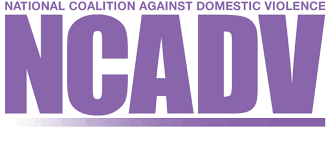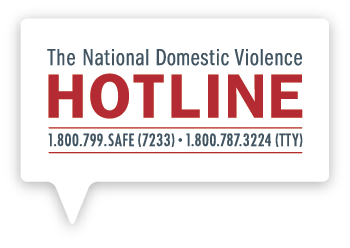Violence At Home
Did you know that children exposed to family violence are at a greater risk of having serious adult health problems including tobacco use, substance abuse, obesity, cancer, heart disease, depression and a higher risk for unintended pregnancy?
What is Domestic Violence
The odd slap? An abusive threat? Sex when you don't want it? Or a life threatening attack? All of these. Domestic violence is "the intentional and persistent physical, emotional or psychological abuse of anyone in the home in a way that causes pain, distress or injury". Young people are affected not only by directly witnessing abuse, but also by living in an environment where someone - usually the main caregiver - is being repeatedly victimized. Young people in a home where someone is being abused are also at greater risk of being abused themselves, or being used to control either of their parents. Due to their own lack of self-worth the abusive partner feels the need to control all those to whom they consider themselves superior to. In a family this includes children.
Witnessing abuse
Young people witness violence in the home in a number of different ways. They may see or hear the abusive episode, be used or even involved in the violence, will experience the aftermath, and sense the tension in the build-up to the abuse. Even when the parents believed the young person was unaware of what was happening, the young person can often give detailed accounts of the events. As well as the physical violence often found in abusive relationships, the young person will almost certainly be subjected to frequent emotional abuse of the mother in the form of name-calling, accusations and threats made by the abuser in their presence. As mentioned above where the wife/partner is being abused, the children are also likely to be abused themselves. This is most true of emotional abuse, where the young persons own self-esteem is battered by being shouted at, told they are stupid or are not trying hard enough, or given mixed messages by being favored one moment and put down the next. Quite apart from possible physical involvement or direct abuse, these emotionally damaging actions have a detrimental and often long-lasting effect on the young person.
You may experience any of the following problems
Emotional problems: crying, anxiety and sadness, confusion, irritability, anger (which can be directed toward either parent or other children etc.), depression, suicidal behavior, nightmares, fears and phobias, post traumatic stress disorder (PTSD), high degrees of stress, self-blame and low self-esteem.
Behavioral problems: aggression, hyperactivity & hyper vigilance, regression, becoming troublesome at home or school, cruelty towards pets, involvement in violent intimate relationships, substance use and addiction, truancy and delinquency, withdrawing into or isolating themselves, and lower academic achievements.
Physical problems: bed-wetting, nervous ticks, headaches or stomach aches, nausea or vomiting, eating disorders, numbing, self-harm and insomnia.
Other children will often hold themselves responsible for the abuse, especially where extreme violence has been an issue. Children living in an abusive environment may also condone violence or the threat of violence to resolve conflict in relationships.
Teens externalize their negative emotions through either talking about what’s going on or through their behavior. Most commonly, teens who witness domestic violence will begin to withdraw from social experiences and isolate themselves. They might also become defiant or rebellious at school.
Domestic Violence Statistics
Family and domestic health violence are estimated to affect 10 million people in the United States per year.
About 10% of children are exposed to domestic violence annually
About 25% of children are exposed to at least one domestic violence incident in their childhood
90% of these children are direct eyewitnesses of violence
30-60% of males who batter their wives also batter their children
80-90% of domestic violence victims neglect or abuse their children
Abused teens may not report abuse. Individuals 12 to 19 years of age report only about 1/3 of crimes against them, compared with 1/2 in older age groups
Source: National Center for Biotechnology Information: https://www.ncbi.nlm.nih.gov/books/NBK499891/
GET HELP
Domestic Violence Action Center Oahu Helpline: (808) 531-3771
National Center for Victims of Crime: 1-855-4-VICTIM (1-855-484-2846)
National Domestic Violence Hotline: 1-800-799-7233 (1-800-799-SAFE) or 1-800-787-3224 (TTY)
If you are unable to speak safely: online chat on https://www.thehotline.org/ or text LOVEIS to 1-866-331-9474










